Regional Cuisine of Japan: Local Specialties of Kyushu region and Okinawa.
In Japan, there is a special kind of food called “Kyōdo Ryōri” (郷土料理), which means regional or local cuisine. Various regions have developed their own unique food cultures and these traditional dishes have been passed down through generations in different parts of the country. Each region has its own unique ingredients, cooking methods, and flavors, often shaped by the local climate, geography, and culture.
Kyōdo Ryōri isn’t just about eating—it’s a way to experience the local history, traditions, and lifestyle of each area in Japan. If you're traveling in Japan, trying these regional dishes is one of the best ways to connect with the culture and the people.
In this article, we will introduce the Local Dishes of Kyushu and Okinawa.
Mizutaki
Mizutaki is a traditional hot pot made by simmering bone-in chicken pieces from cold water to extract umami, then enjoyed with ponzu sauce. While the classic method uses water alone, nowadays it’s often prepared with chicken stock. The rice porridge or soup-over-rice made from the remaining broth is especially popular.
Gameni
Gameni is a simmered dish made with chicken, konjac, and root vegetables seasoned with soy sauce, sugar, and mirin. It is traditionally prepared for celebrations throughout Fukuoka and is also known as “Chikuzen-ni.” It is said to have originated as a battlefield dish of the Kuroda Clan.
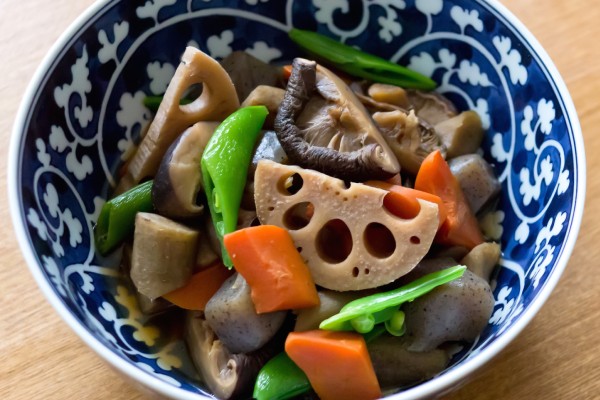
Live Yobuko Squid Sashimi
This dish features freshly caught swordtip squid (kensaki ika) taken directly from a tank and swiftly prepared to resemble its swimming form—usually within a minute—offering a translucent appearance and natural sweetness.
Suko Sushi
Suko Sushi is made by layering sliced fresh fish from the Ariake Sea and finely chopped vegetables on top of sushi rice made with Shiraishi-grown rice. The rice is portioned into 10cm squares and topped with colorful, seasoned ingredients. The version topped with grilled mudskipper is especially prized.
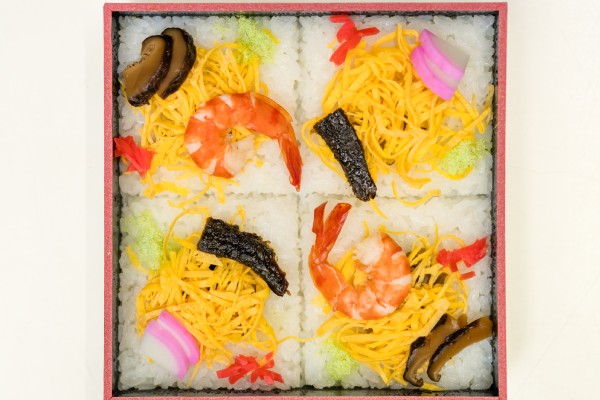
Shippoku Cuisine
"Shippoku" comes from the words for table (“shoku”) and tablecloth (“fuku”). This unique Nagasaki cuisine reflects multicultural influences and developed from Chinese banquet-style hospitality where guests of all ranks dined together.
Guzōni
Guzōni is a hearty soup containing mochi (rice cakes), meat, fish cake, and vegetables. It’s believed to have originated during the 1637 Shimabara Rebellion, when Amakusa Shirō and his followers used mountain and sea ingredients to prepare mochi soup while under siege.
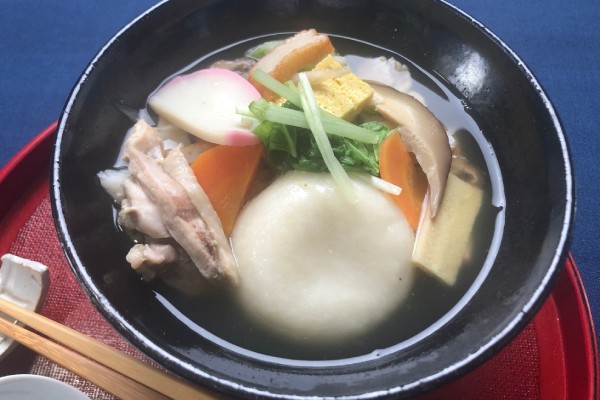
Horse Sashimi
Horse sashimi, or basashi, is a delicacy known for its tender, melt-in-your-mouth texture and is often served with sliced onions, grated ginger or garlic, and sweet local soy sauce. Fatty cuts, lean cuts, and mane meat are especially popular.
Ikinari Dago
“Ikinari Dago” is a steamed treat made by wrapping slices of sweet potato in flour dough. The word “ikinari” means “suddenly” or “quickly” in the local dialect, reflecting how quickly and easily the snack can be made.
Karashi Renkon
Karashi Renkon consists of lotus root holes filled with spicy mustard miso, coated in turmeric-colored flour batter, deep-fried, and sliced. The crunch of the lotus root and the pungent mustard flavor create a refreshing bite.
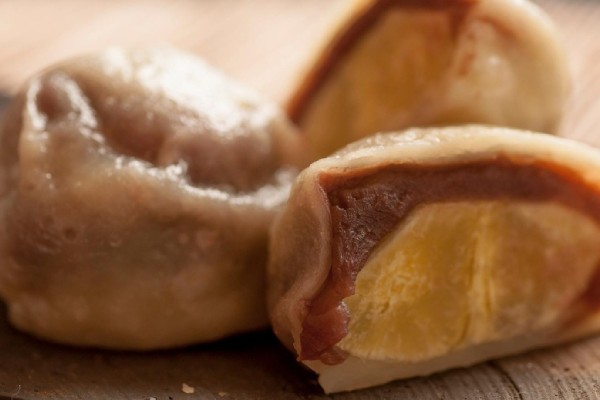
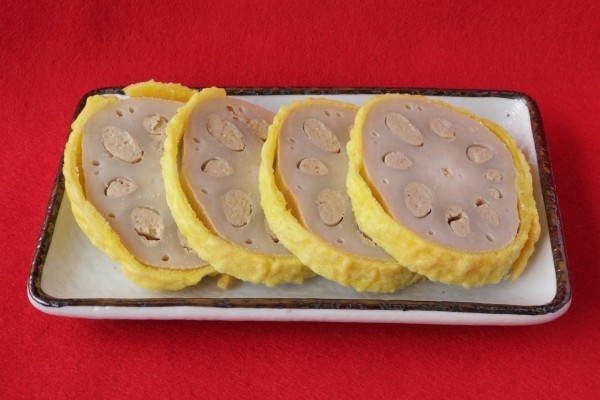
Buri no Atsumeshi
This dish features sashimi of yellowtail marinated in a soy-based sauce, served over hot rice with toppings like green onions, seaweed, and sesame seeds. Dashi or tea is poured over the dish to enjoy it like ochazuke (tea-rice).
Gomadashi Udon
“Gomadashi” is a paste made by grilling white fish (like lizardfish), mashing it, and mixing it with soy sauce and sesame. It’s placed atop boiled udon noodles, then hot water is poured over to create a quick, flavorful soup.
Hand-Stretched Dumpling Soup
Flour, salt, and warm water are kneaded to make dumplings, which are stretched into thin ribbons. These are simmered in a broth of dried sardines, shiitake mushrooms, and burdock root, then seasoned with miso and garnished with scallions or parsley.
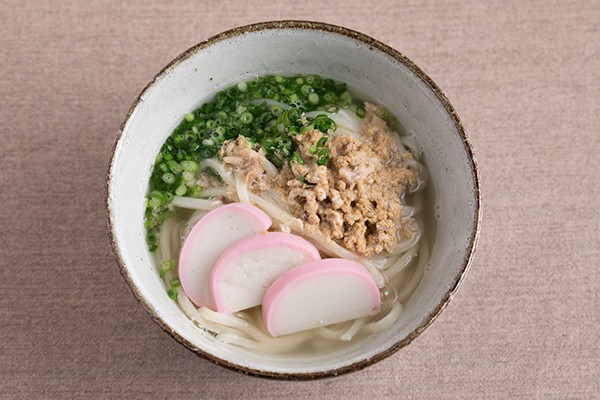
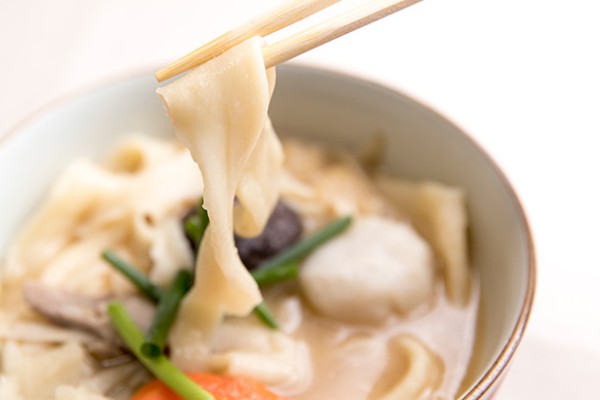
Charcoal-Grilled Local Chicken
Bite-sized chicken is seasoned with salt and pepper and grilled over high charcoal heat until it develops a charred black exterior. The smoky aroma enhances the flavor. The local "Miyazaki Jitokko" breed is especially prized for its tender, flavorful meat.
Hiyajiru
Hiyajiru is a refreshing summer dish made by grinding grilled dried fish with sesame and miso, spreading the paste on a mortar surface and roasting it, then mixing it with broth, cucumber slices, and shiso leaves. It is poured over hot barley rice and is especially popular during the summer heat.
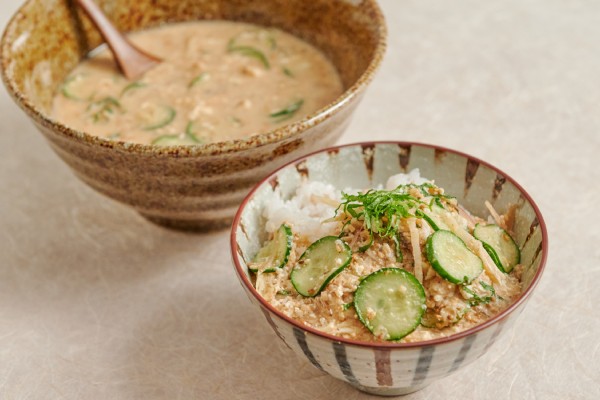
Keihan (Chicken Rice)
This is a rice dish served in a bowl topped with shredded chicken, thin omelet strips, simmered shiitake mushrooms, chopped pickled papaya, and island citrus peel. It is then doused with hot chicken broth and eaten like ochazuke. The fragrant broth is key to its flavor.
Kibinago Dishes
Kibinago (silver-stripe round herring) is served raw with vinegared miso, grilled with salt, simmered, deep-fried, or in soups. The chrysanthemum-style sashimi presentation is especially iconic. The fish is best enjoyed from spring to early summer during its spawning season.
Tsukeage
Tsukeage, derived from Okinawa’s “chikiagi,” is made by deep-frying minced fish (such as sardines or flying fish) often mixed with vegetables like sweet potatoes and carrots. It is a regional staple in Kagoshima.
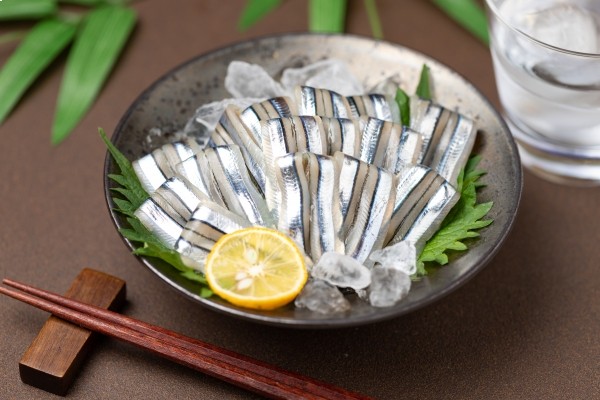
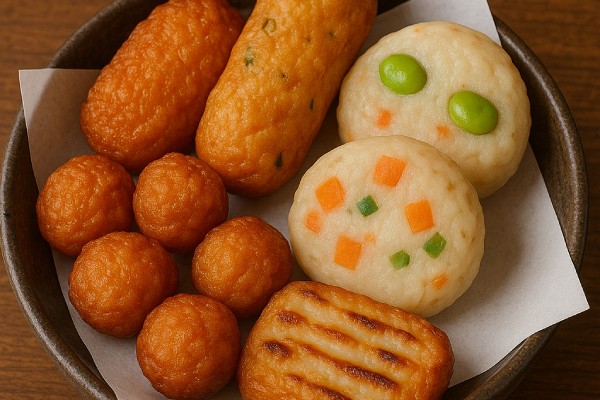
Okinawa Soba
Okinawa soba noodles are wheat-based, boiled, and coated with oil. The broth is made from pork bones and dried bonito. Toppings vary but often include pork belly, fish cake, and green onions. “Soki Soba” with pork spare ribs is the most well-known variety.
Goya Champuru
Champuru refers to Okinawan stir-fries that mix tofu, vegetables, and pork. “Goya Champuru” includes bitter melon, which is rich in vitamin C and effective for fighting fatigue. Other variations use cabbage, bean sprouts, or papaya.
Squid Ink Soup
Ikasumi-jiru is a striking black soup made with squid ink, squid, and pork simmered in bonito broth. It is known for its rich flavor and is said to help with recovery from fatigue, shoulder stiffness, and postpartum weakness.
update